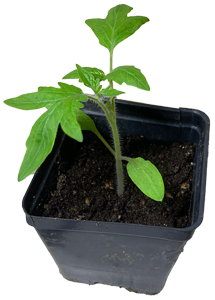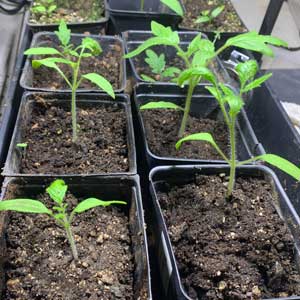Tomato Seed Saving

I am not sure if it’s actually a universal experience or not, but I feel as though everyone’s first venture into gardening is planting tomatoes and peppers. Naturally, these have been in my garden every year since season one. Each year I implement new techniques in order to get closer to my goal of having a self-sufficient garden. For example, one year my tomatoes suffered from blossom end rot. After some research, I learned blossom end rot can be solved with calcium. So, the next year, I mixed egg shells from my chickens with my tomato fertilizer. Another year I had so many tomatoes that I needed to get creative with how I processed and stored the tomatoes for the winter. I ended up canning a year's supply of tomato sauce and salsa. This year, however, I decided that I wanted to take another step towards self-sufficiency by saving my own seeds. There’s something about seed saving that feels like a milestone in self-sufficiency. It’s the first complete cycle that my tomatoes have made from seed to plant to fruit and back to seedling again. With any luck, in a few years, I can have generations of tomatoes growing in my garden that use no outside fertilizers, seeds, pesticides, or help from outside the farm.
This spring I have started my first set of saved seeds, and I am excited to share that process with you whether they turn into a success story or a lesson in what not to do. I am sure that I will learn things along the way and hopefully, you will too.
Last spring, I had so many healthy tomatoes that I could hardly keep up. There were several evenings of me processing tomatoes into pasta sauce. I even picked a few green tomatoes to have fried green tomatoes all winter long by slicing and freezing them. As I was processing all these tomatoes, I suddenly had the idea to try to save the seeds of at least one of them. So I quickly did some research and found out that I would need to clean them, dry them, and store them.
To start this process, I carefully removed all the seeds from one of my healthy tomatoes and put them into a jar. I let them sit in the jar for a day or two to develop a protective barrier around the seeds. This is something I had read about online. After a couple of days, I filled the jar with water, sealed it up, and shook it to clean the flesh of the fruit off of the tomatoes. I rinsed out the water and repeated until the water in the jar was consistently clear. I then wrapped all the seeds in a paper towel to dry in a cool, dark cabinet. That’s where they stayed until February.
In February, I decided to get my tomatoes started early for the year. It is earlier than I normally start them, but I figured it couldn’t hurt. Unfortunately, as my plants were just about to sprout, my cats dug up my starting trays that were kept in the house and killed them all off. I wasn’t able to replant my tomatoes until mid-March. At which point, I planted both store-bought tomatoes and some of my saved seeds. I also threw in some peppers too. Now, when I start seeds, I need to be very careful to keep them at the right temperature consistently. My house is heated through a woodstove and, therefore, does not maintain a consistent 60-70 degrees. My solution is to keep my starts in little greenhouse trays that rest on a warming mat. This usually keeps the soil temperature at a consistent 70 degrees while the greenhouse dome keeps the humidity up.

Right: Store Bought Seeds
After about a week all of the store-bought seeds had sprouted and were doing well. The peppers were growing their first leaves and some of the tomato seedlings already had several leaves on them. To my disappointment, however, none of my saved seeds had sprouted yet. After a few more days I determined that they just were not going to start. Disappointed, I decided to start researching ways to save this year's seeds for next year. Much to my surprise, however, all my saved seeds sprouted. They took about a week longer than the store-bought seeds but they all eventually sprouted up and were growing strong. In fact, they were so successful that I needed to thin many of them. Now they are well on their way to being full-grown tomato plants that will be transplanted into my main garden beds. Though I am unsure how they will fare as they get older, I am excited to hopefully save a second generation of seeds for next year's plants.
Stay tuned for updates as my heirloom tomatoes grow and we’ll see how they do when it comes time to transplant and harvest!